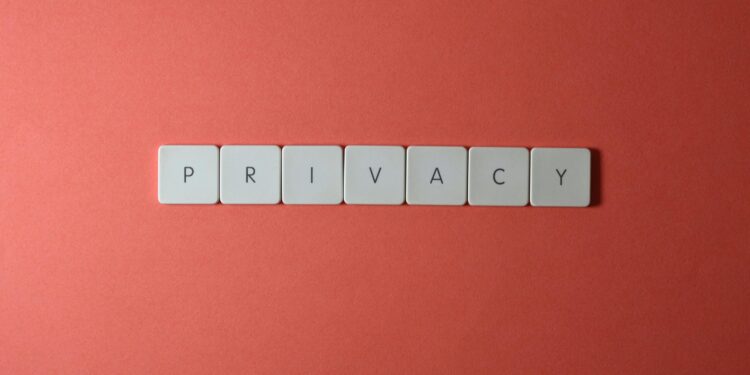Online privacy is becoming harder to protect. Every time you go online, you leave behind information that companies and bad guys can use. It is like leaving a trail of breadcrumbs. This article will show you how to take back control of your online life.
Understanding the Threat
Your online life is being watched. Every little thing you do online is recorded and used by companies. They build a picture of you based on your searches, apps, and other online habits. This information is very valuable and can be used for ads, to influence your vote, or even steal your identity.

Reclaim Your Digital Footprint
Password Mastery
Strong passwords are your first line of defense. Don’t use easy-to-guess passwords like ‘password123’. Mix letters, numbers, and symbols. A password manager can help you create and remember really strong passwords.
1. Create strong, unique passwords: Don’t use easy information. Avoid using birthdays, pet names, or common words in your passwords. Hackers often try these first.
2. Implement password complexity: Make your password hard to guess. Use a mix of capital and lowercase letters, numbers, and symbols. For example, StrongP@ssword123!
3. Avoid password reuse: Don’t use the same password everywhere. If hackers steal your password from one site, they can try it on all your other accounts.
4. Consider a password manager: Password managers can help you create and remember really strong, different passwords for all your accounts. They keep your passwords safe in one place.
5. Enable passwordless authentication:For extra protection, use fingerprint or face recognition (biometrics) or a small physical key. These make it much harder for someone to steal your identity online.
Two-Factor Authentication (2FA):
Add an extra layer of protection. Use two-factor authentication (2FA). This means you need two ways to prove it is really you, like a password and a code sent to your phone. It is super important for your email and bank accounts.
1. Enable 2FA for essential accounts: Protect your most important accounts first. Focus on securing your email, bank accounts, and social media. These accounts hold lots of personal information.
2. Choose reliable 2FA methods: Use extra security with apps or keys. For even better protection, download an authenticator app or get a small physical key. These give you another layer of security when logging in.
3. Be cautious of SMS-based 2FA: SMS-based 2FA isn’t always safe. Hackers can sometimes take over your phone number (SIM swapping) and get the codes sent to you.
4. Use different verification methods: Use different ways to verify yourself. Combining multiple 2FA methods, like a code sent to your phone and a physical key, makes it much harder for hackers to break in.
5. Regularly review and update 2FA settings: Keep your contact info up-to-date. Make sure your phone number, email, and address are correct everywhere you use them. This helps protect you from identity theft and lets you get important messages.
Beware of Public Wi-Fi
Public Wi-Fi is risky. Anyone can see what you do online on free Wi-Fi. Don’t use your bank or other important accounts on public Wi-Fi. If you must, use a VPN to protect your information.
1. Avoid sensitive activities: Don’t use your bank or shopping apps, or check your personal emails on public Wi-Fi.
2. Use a VPN: A VPN hides your online activity, like using a secret tunnel. Use one on public Wi-Fi to protect your information.
3. Be mindful of hotspot names: Only connect to Wi-Fi networks with real names. Avoid networks with strange names.
4. Turn off Wi-Fi when not in use: When you’re not using Wi-Fi, turn it off to stop accidental connections.
5. Consider using a mobile hotspot: If you can, use your phone’s data instead of public Wi-Fi. It’s safer.
Limit Social Media Sharing
Social media collects a lot of information about you. Check your privacy settings and only share things you’re okay with everyone seeing. Be careful about the pictures and personal stuff you post.
1. Review privacy settings: Learn how to change your privacy on social media and pick the settings that are best for you.
2. Be selective about shared information: Don’t share too much personal stuff about yourself on social media.
3. Use strong privacy controls for photos and videos: Keep your pictures and videos private. Don’t let just anyone see them.
4. Tag carefully: Be careful who you tag in your photos and posts.
5. Limit app permissions: Decide what information social media apps can use on your phone.
Secure Your Devices
Keep your computers, phones, and tablets safe with strong passwords or use your fingerprint or face (biometrics).
Always keep your phone and computer software up-to-date. This stops hackers from finding weak spots.
1. Use strong passwords or biometric authentication: Keep others out. Make sure no one can use your phone or computer without your permission.
2. Keep software up-to-date: Keep your phone and computer software up-to-date. This closes any security holes.
3. Consider antivirus and anti-malware software: There are programs that can help protect your devices from viruses and other bad stuff.
4. Secure your physical devices: Use locks, alarms, or trackers to stop people from stealing your phone or computer.
5. Create regular backups: Make copies of your important files and save them in a safe place.
Be Wary of Phishing Attacks
Be careful of emails, links, or files you don’t expect, even if they look like they are from someone you know. Hackers try to trick you into giving them your personal information.
1. Verify the sender: Look before you click. When you see a link in an email, hover your mouse over it without clicking. This will show you the real website address.
2. Avoid clicking on suspicious links: Watch out for emails or messages you weren’t expecting, especially if they have links or attachments. These could be scams.
3.Protect your personal information: Never share private stuff like passwords, bank details, or social security numbers in emails or messages you didn’t ask for.
4. Use email filters: Use a spam filter to block emails that look suspicious.
5. Educate yourself about phishing tactics: Know the tricks. Learn how phishing scams work. Hackers often pretend to be banks, companies, or friends to steal your information.
Use Strong Encryption
Encryption is like a secret code that protects your data. Always look for websites with “https” in the address. You can also use special tools to encrypt your emails and files.
1. Prioritize HTTPS websites: Look for the padlock in the website address to make sure it’s safe.
2. Encrypt emails and files: Use encryption tools to protect sensitive information when sending emails or storing files.
3. Consider end-to-end encryption: Use the best kind of security to keep your messages safe.
4. Use encrypted messaging apps: Use apps that have the strongest security for your messages.
5. Back up encrypted data: Regularly back up your encrypted files to prevent data loss.
Mind Your Browser Privacy
Most browsers track your online activities. Use privacy-focused browsers or browser extensions to limit tracking. Clear your browsing history and cookies regularly.
1. Use privacy-focused browsers: Try using Firefox or Brave. They are better at protecting your privacy.
2. Clear browsing history and cookies regularly: Delete your browsing history and cookies often to hide what you’ve been doing online.
3. Use incognito or private browsing modes: Use private browsing mode to stop websites from following you around the internet.
4. Disable tracking and ad personalization: Turn off settings that let websites follow you and show you ads based on your interests..
5. Use browser extensions for privacy: Get tools that make your browser even better at protecting your privacy.
Review App Permissions:
Apps often ask for access to your phone’s features. Only say yes if you really trust the app and understand why it needs that information.
1. Understand app permissions: Know what an app wants to do with your phone before you let it in.
2. Grant only necessary permissions: Don’t let apps see your private stuff unless they really need it.
3. Regularly review app permissions: Check what your apps can do from time to time.
4. Be cautious about app downloads: Only get apps from safe places to avoid problems
5. Remove unused apps: Delete apps you don’t use anymore to stay safe
Stay Informed
Things change online all the time. Keep up with the latest threats and safety tips. Read newsletters from trusted security experts and follow them on social media.
1. Follow cybersecurity experts: Find people who know about online safety and follow what they say.
2. Subscribe to security newsletters: Get emails with tips on how to stay safe online.
3. Be cautious of scams and misinformation: Don’t believe everything you see online. Check information from different sources.
4. Participate in security awareness training: Learn how to protect yourself from online dangers.
5. Report suspicious activity: Tell someone if you see something strange online.
Conclusion
Taking control of your online privacy is essential in today’s digital world. By following these steps and staying vigilant, you can significantly reduce your digital footprint and protect yourself from potential threats. Remember, your personal information is valuable, so treat it with care.

















